Test: Analog Electronics - 3 - Electrical Engineering (EE) MCQ
25 Questions MCQ Test - Test: Analog Electronics - 3
A full wave rectifier circuit using centre tapped transformer and a bridge rectifier are fed at 100 V, 50 Hz. The frequencies of outputs in these two rectifiers are
When the ac base voltage in a CE amplifier circuit is too high, the ac emitter current is
When load is coupled to class A amplifier through transformer, efficiency decreases.
The gain of an FET amplifier can be changed by changing
A differential amplifier consists of two CB amplifiers.
Figure shows a portion of linear v - i characteristics of diode. If applied voltage is + 6 V, the current will be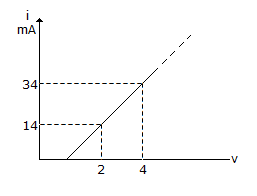
A power transistor dissipates 5 W. If ambient temperature is 30º and case to air thermal resistance is 10º C/W, the case temperature is
An R-C coupled amplifier has mid-frequency gain of 200 and a frequency response from 100 Hz to 20 kHz. A negative feedback network with β = 0.2 is incorporated into the amplifier circuit, the Bandwidth will be
In a commercially available good power supply the voltage regulation is about
The most commonly used bias in BJT amplifier circuits is
The inverting op-amp shown in the figure has an open loop gain to 100. The closed loop given  is
is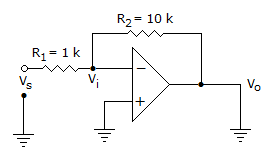
In a voltage regulated power supply the zener operates in the breakdown region when (Vin is input voltage and Vz is zener breakdown voltage)
The parameter h11 for CB circuit is higher than that for CE circuit.
Figure shows a self bias circuit for FET amplifier, ID = 4 mA. Then IS =
In the CE equivalent circuit of figure, the voltage gain is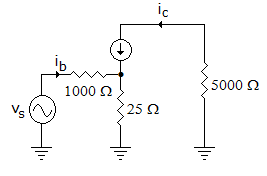
The voltage gain of an amplifier without and with feedback are 100 and 20. The negative feedback is
In the circuit shown in figure, RC = 10k, RE = 150Ω, β = 100, I = 1 mA. The value of  , will be
, will be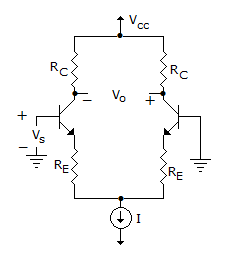
Calculate the conductivity of pure silicon at room temperature when the concentration of carriers is 1.6 x 1010 per cm3. Take μe = 1500 cm2/V-sec, μh = 500 cm2/V-sec at room temperature,
A potential of 7 V is applied to a silicon diode. A resistance of 1 kΩ is also connected in series. If the diode is forward biased, the current in the circuit is



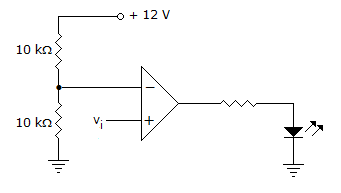
 . Therefore, vi should be more than 6 V.
. Therefore, vi should be more than 6 V. .
.


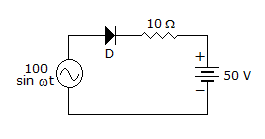
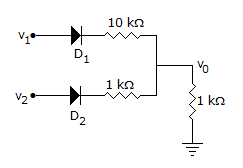


 .
.
 or β = 0.04 or 4% .
or β = 0.04 or 4% .
 .
. A = 6.3 mA.
A = 6.3 mA.















